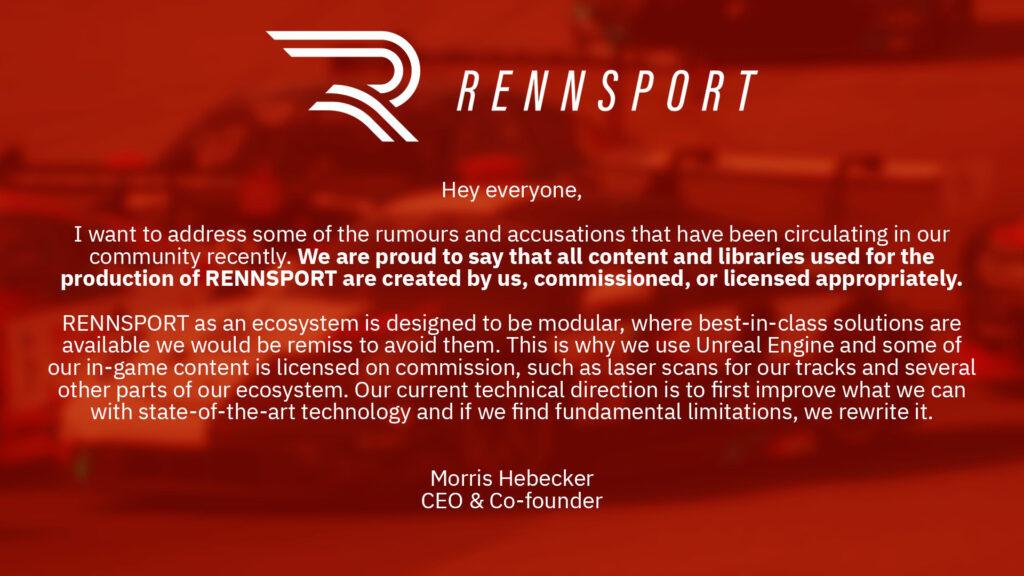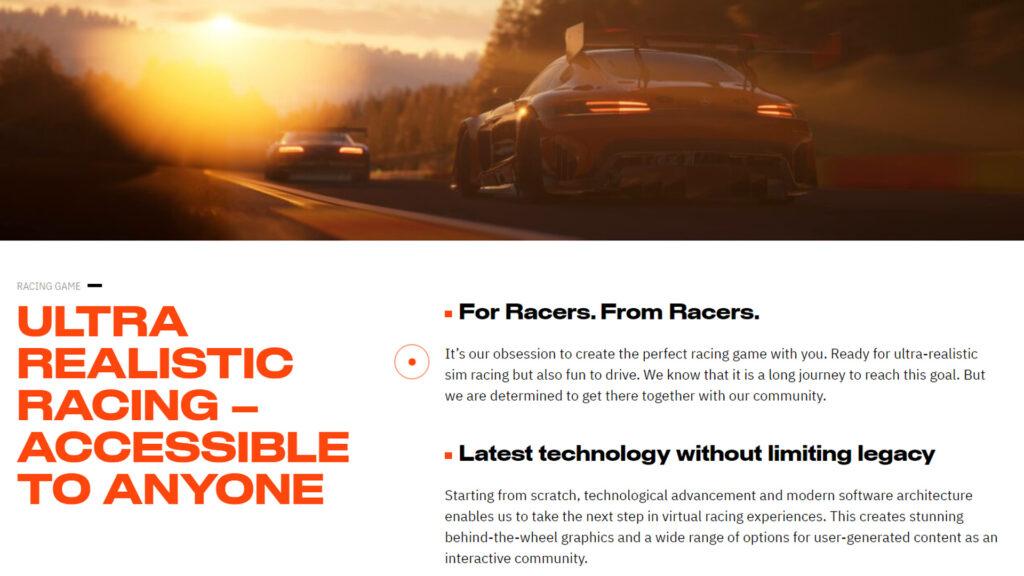“I want to address some of the rumours and accusations that have been circulating in our community recently. We are proud to say that all content and libraries used for the production of Rennsport are created by us, commissioned, or licensed appropriately,” begins the statement from Rennsport CEO and Co-Fouder, Morris Hebecker.
Make no mistake, these are unprecedented scenes in sim racing, the quote above (part of a longer blog post on the game’s website) tries to clarify the development process for the Competition Company’s upcoming Rennsport driving simulator.
In the recent week, posts within rival simulator rFactor 2’s forum appear to show what could be lines of its developer Studio 397’s code within the closed beta of Rennsport. This threw up questions of validity, but also licencing and if it stacks up against Rennsport’s previous claims of a “custom physics engine.”
Rennsport’s statement followed just hours after Studio 397 and Motorsport Games issued their own comment that began with: “Motorsport Games has not issued a licence for rFactor 2 technology to any game developer at this time nor are we aware of licences issued by Studio 397, a wholly owned subsidiary of Motorsport Games, prior to our acquisition of the game, development team and attached technology.”
The Rennsport rebuttal goes on to mention the use of third-party integrations, such as the Unreal Engine itself (used for graphics, in this instance, paired with a different physics engine), MoTeC and FMOD, but crucially it does not directly address the underlying physics.

Potential ‘from scratch’ U-turn
“We have here our custom physics engine, and that’s working in parallel with Unreal Engine,” said Krzysztof Szczech, Rennsport’s Lead Programmer to Traxion.GG in June 2023.
“This is a custom tyre model, but it’s based on some existing models described in some very smart physics books.”
Now, there appears to be a change in attitude, away from previous quotes with the latest statement expelling the virtues of working with external technology partners.

“Rennsport as an ecosystem is designed to be modular, where best-in-class solutions are available we would be remiss to avoid them,” continues Hebecker.
“This is why we use Unreal Engine and some of our in-game content is licensed on commission, such as laser scans for our tracks and several other parts of our ecosystem. It is our desire to work with external partners for the lifetime of the project, so this has always been a core value for us,”
“Creating a really good product requires using really good technologies, not all good technology is technology that you create,” is a particularly key segment, stated by Hebecker.

Rennsport is being more open about using third-party clients, perhaps moving away from the rhetoric that apart from Unreal, it’s unique, and now rather positioning itself as a potential ‘cherry picker’.
The question still remains, about the physics in use – could it be something completely unique as previously stated, something akin to rFactor 2‘s isiMotor2.5 but licenced via an unorthodox method, or the older isiMotor2 that’s then been modified? We expect further clarification from Rennsport ‘soon’.
Full disclosure – Traxion.GG is part of Motorsport Games and the Motorsport Games family of brands. All Traxion.GG content is editorially removed from Motorsport Games video game development and created by a dedicated team.
Image: Rennsport






Chat with the Community
Sign Up To CommentIt's completely Free